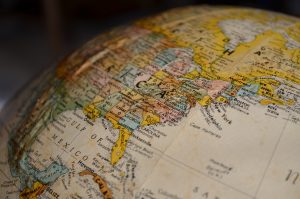
Where I live, navigating the area is usually as easy as mapping my route from address to address. However, other places in the world, things are not always so easy, particularly in undermapped or outlying locations, in which streets might not have steady names and fixed addresses sometimes are few and far between.
Google, in an attempt to resolve some of those issues, introduced a global addressing system it refers to as Plus Codes. According to the company’s Indian division they explained it in a post, ‘The system is based upon dividing the geographical surface of the globe into small ‘tiled areas’, which attribute a special code to each of them.’ These tiles combine a 6 character “local code” which describes a 14m x 14m square that has a broader 4 character “area code” which covers a 100km x 100 km square. As the company explains in other places, it also can produce codes that have an even higher degree of specificity, which further divides the globe into 3m x 3m units.
Rethinking of cartographic divisions has been used by others businesses too. Google is not the first business to try this type. In the year 2016, Joshua Keating discussed a likewise project from a British company referred to as What3Words which also sectioned the globe up into 57 trillion 3m x 3m squares. Rather than complicated alphanumeric codes, What3Words assigns those locations 3 word names like basis.laws.slice.
The approach by What3Words has an advantage over Google’s, as even the most random combinations of terms are probably easier to remember than more abstract sequences of letters and numbers, whether or not these codes are, as Google promises, like‘[p]laces which are close to one another.’For example, where phone numbers are easy enough to recall, the addition of letters clearly could lead to misdirection, particularly if you are attempting to offer a location over the telephone. Google’s system tends to be optimized for machines instead of human beings, much as the web already is.
It is easy to imagine applications of the system of Google which would improve the interface between emerging technologies and human users. For example, drone delivery ultimately may assist in routing much-needed products to out-of-the-way locations, yet directing autonomous aircraft may be challenging in some places. While exact GPS coordinates might be simple for a robot to locate in some situations, they also are reference points (impractical) for human beings who fill out order forms and might not provide perfect drop-off zones. The location codes offer a happy medium, as they ought to be easier to write and might be more accessible for a craft. The codes would offer a more human-friendly method of interfacing with otherwise-alienating algorithmic calculations.
Although steadier addressing systems—particularly in rural areas—are probably a great thing in other ways, too, there are some reasons for caution here. According to a blog post Google, ‘all that is needed [to utilize the codes] is Google Maps on a phone.’ For now, that means the ones using the system are partly shackled to Google’s own application infrastructure. While that is probably fine for regular civilian uses of the system, it might restrict other applications.

